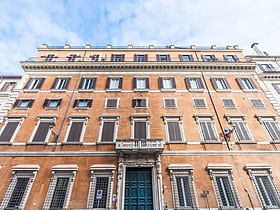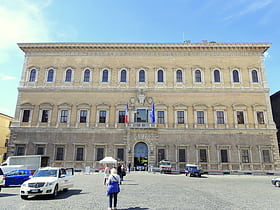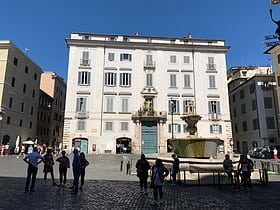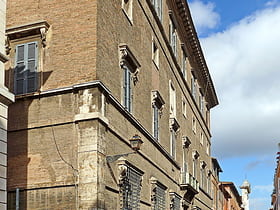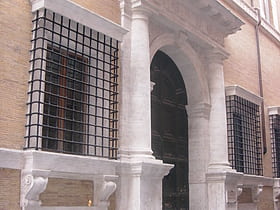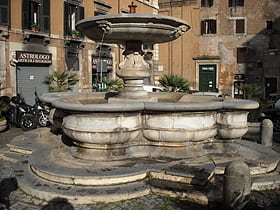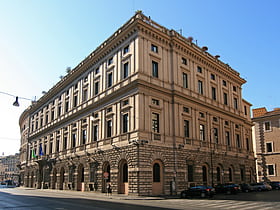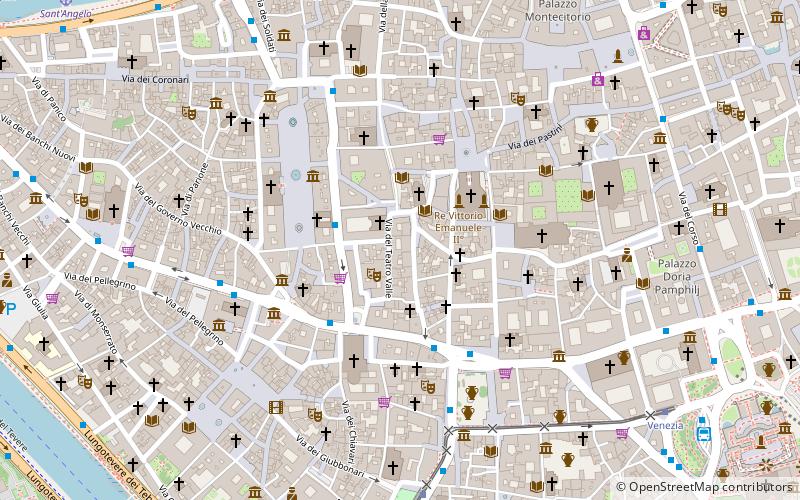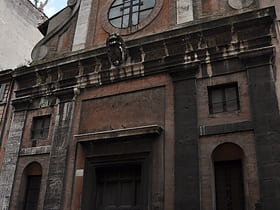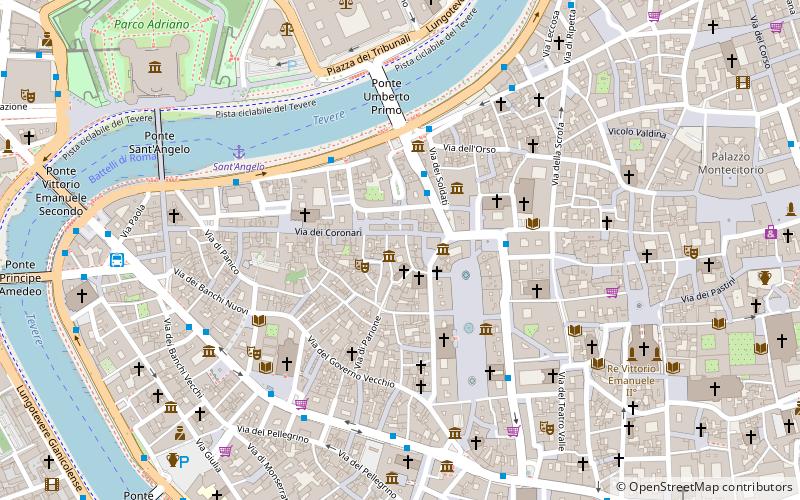Rome: Renaissance Architecture
Places and attractions in the Renaissance architecture category
Categories
- Church
- Baroque architecture
- Historical place
- Museum
- Palace
- Sacred and religious sites
- Vernacular architecture
- Architecture
- Street
- Art museum
- Ancient Roman architecture
- Ruins
- Fountain
- Park
- Monuments and statues
- History museum
- Square
- Bridge
- Temple
- Renaissance architecture
- Neighbourhood
- City gate
- Romanesque architecture
- Specialty museum
- Arch
- Theater
- Cemetery
- Catacombs
- Archaeological site
- Historic walking areas
- Concerts and shows
- Sport
- Sport venue
- Giacomo della Porta
- Hill
- Gianlorenzo Bernini
- Art gallery
- Tomb
- Francesco Borromini
- Shopping
- Natural attraction
- Archaeological museum
- Martino Longhi il Vecchio
- Unesco
- Carlo Maderno
- Library
- Carlo Rainaldi
- Spiritual
- Opera
- Arenas and stadiums
- Aqueduct
- Nature
- Modern art museum
- Mausoleum
- Obelisk
- Giovanni Battista Soria
- Giovanni Antonio De Rossi
- Tower
- Forts and castles
- Music venue
- Garden
- Golf
- Hotel
- Gothic Revival architecture
- Nightlife
- Baths
- Amusement park
- Memorial
- Shopping centre
Palazzo Albertoni Spinola
The Palazzo Albertoni Spinola is a hidden jewel nestled in the heart of Rome, Italy. This historical palace is an exemplary piece of Baroque architecture, its construction dating back to the 17th century. Designed by the renowned architect Giacomo della Porta, this...
Palazzo Farnese
Renaissance palace and French embassy Palazzo Farnese or Farnese Palace is one of the most important High Renaissance palaces in Rome. Owned by the Italian Republic, it was given to the French government in 1936 for a period of 99 years, and currently serves as the French embassy in Italy.
Palazzo Fusconi-Pighini
The Palazzo Fusconi-Pighini is a Renaissance-style palace located on Piazza Farnese #44 in the rione Regola of central Rome, Italy. The 16th-century palace also goes by the name of Pighini or Gallo di Roccagiovine. Today the palace houses various offices including the embassy of Cyprus.
Palazzo Sacchetti
Palazzo Sacchetti is a palazzo in Rome, important for historical and artistic reasons. The building was designed and owned by Antonio da Sangallo the Younger and completed by Nanni di Baccio Bigio or his son Annibale Lippi.
Palazzo Baldassini
Palazzo Baldassini is a palace in Rome, Italy, designed by the Renaissance architect Antonio da Sangallo the Younger in about 1516–1519. It was designed for the papal jurist from Naples, Melchiorre Baldassini. The ground floor was used for shops or workshops, and the piano nobile consisted of private apartments.
Fontana del Pianto
The Fontana del Pianto, also known as the Fontana di piazza delle Cinque Scole, is a monumental fountain located in the Piazza delle Cinque Scole in the rione of Regola in Rome.
Santa Maria Portae Paradisi
Santa Maria Portae Paradisi is a catholic church in Rome, in the Rione Campo Marzio, along via di Ripetta.
Sant'Omobono
Sant'Omobono is a church in Rome at the foot of the Capitoline Hill in rione Ripa. It was built in the 15th century and called San Salvatore in Portico. When the church was given to the "Università dei Sarti" in 1575, the church was dedicated to their patron saint, Saint Homobonus.
Palazzo Vidoni-Caffarelli
The Palazzo Vidoni-Caffarelli is a palace at the intersections of Via del Sudario, Piazza Vidoni, and Corso Vittorio Emanuele in the rione Sant’Eustachio in Rome.
Palazzo Sciarra
The Palazzo Sciarra is a palace built by a branch of the Colonna family, with the main facade located on the Via del Corso #239 in Rione Colonna in central Rome. It presently houses the headquarters of Fondazione Roma.
San Paolo alle Tre Fontane
San Paolo alle Tre Fontane, in English "St Paul at the Three Fountains" is a Roman Catholic church dedicated to St Paul the Apostle, at the presumed site of his martyrdom in Rome. In Latin it is known as Sancti Pauli ad Aquas Salvias.
Santa Maria Scala Coeli
Santa Maria Scala Coeli is a Roman Catholic Church located on the grounds of the Tre Fontane Abbey located on Via di Acque Salvie 1 in the Quartiere Ardeatino in Rome. This is one of three churches affiliated with the Trappist monastery, and is located on a small lane, Via delle Tre Fontane, inside the abbey complex.
San Giovanni in Oleo
San Giovanni in Oleo is a chapel adjacent to the church of San Giovanni a Porta Latina in Rome. It commemorates the place where, according to legend, in 92 CE, at the hands of the emperor Domitian, the apostle John was immersed in a vat of boiling oil from which he emerged unharmed.
Villa Madama
Villa Madama is a Renaissance-style rural palace located on Via di Villa Madama #250 in Rome, Italy. Located west of the city center and a few miles north of the Vatican, and just south of the Foro Olimpico Stadium.
Palazzo Lante
Palazzo Lante, also known as either Palazzo Medici Lante or Medici Lante della Rovere, is a Renaissance-style aristocratic palace located on Piazza Dei Caprettari #72, near the church of Sant'Eustachio in the rione named after the church in central Rome, Italy.
Sala Lancisiana of Saint James in Augusta
The Sala Lancisiana in via di Ripetta is a renaissance building in Rome, part of the Ospedale di San Giacomo degli Incurabili. Built at the end of the XVI century by the will of Anton Maria Salviati from the architect Francesco Capriani, it was named after the surgeon Giovanni Maria Lancisi.
Villa Lante
Villa Lante al Gianicolo is a villa in Rome on the Janiculum Hill. It is a summer house designed by Giulio Romano in 1520-21 for Baldassare Turini, as one of Romano's first independent commissions after the death of his master Raphael.
Scrofa
Palazzo Aragona Gonzaga is a 16th-century palace in Rome, Italy; it was once the residence of Cardinal Scipione Gonzaga. Today, its late Renaissance street facade bears plaques commemorating two of its residents, Saint Aloysius Gonzaga and the poet Torquato Tasso.
Santa Maria in Cappella
The Carafa Chapel is a chapel in the church of Santa Maria sopra Minerva, Rome, Italy, known for a series of frescoes by Filippino Lippi.
Palazzo Della Rovere
Palazzo Della Rovere is a palace in Rome, Italy, facing Via della Conciliazione. It is also known as Palazzo dei Penitenzieri.
Chiostro del Bramante
The Chiostro del Bramante is an Italian Renaissance building in Rome, commissioned by Cardinal Oliviero Carafa in around 1500, and designed by the architect Donato Bramante. Today the building serves as a space for exhibitions, meetings and concerts. A cafe and bookshop are housed within the building.
Map

